1980 Newsletter
Completion of Steam Building. Installation of Corliss safe. Arrival of Vance Phillips collection and Terry turbine. →
New England Wireless & Steam Museum
A Non-Profit • Public • Educational • Engineering Museum
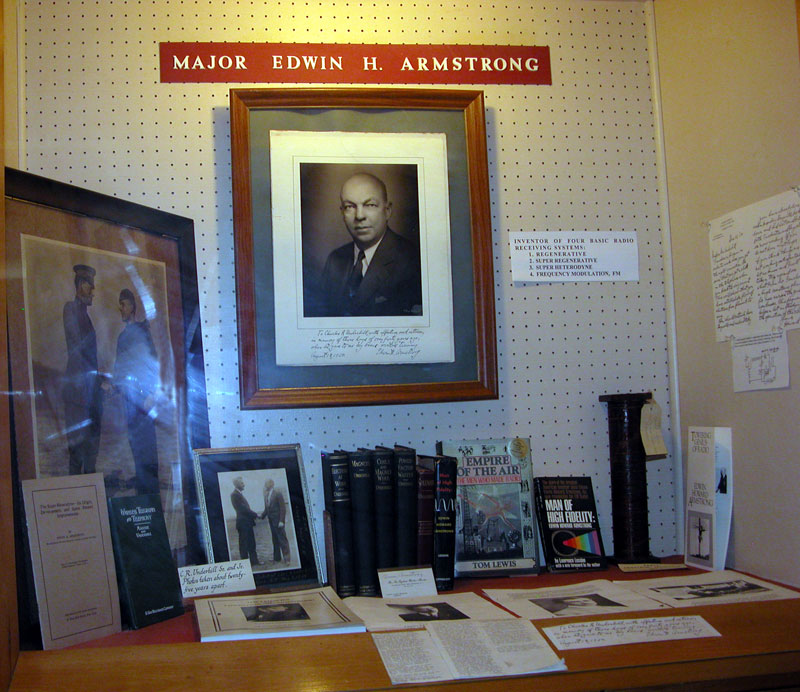 Edwin Howard Armstrong was a giant in many respects. That picture was given to us by the gentleman on the left, who was Mr. Charles R. Underhill. He started Armstrong on his distinguished career because Armstrong lived in the neighborhood of Mount Vernon, in New York. And Underhill lived a couple houses away… and very quickly, young Armstrong found out that Underhill was the man to go to find the answers to questions that bothered him. →
Edwin Howard Armstrong was a giant in many respects. That picture was given to us by the gentleman on the left, who was Mr. Charles R. Underhill. He started Armstrong on his distinguished career because Armstrong lived in the neighborhood of Mount Vernon, in New York. And Underhill lived a couple houses away… and very quickly, young Armstrong found out that Underhill was the man to go to find the answers to questions that bothered him. → 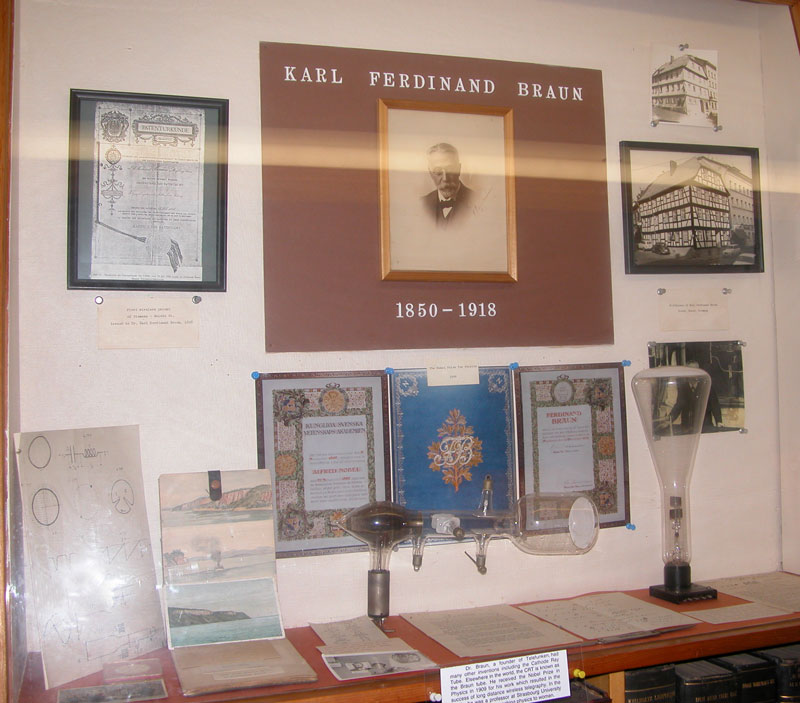 Braun shared the Nobel Prize in 1909 "in recognition of contributions to the development of wireless telegraphy", and later invented the cathode ray tube. He went on to be one of the founders of the Telefunken Company. And Telefunken was, of course, a giant competitor of Marconi. →
Braun shared the Nobel Prize in 1909 "in recognition of contributions to the development of wireless telegraphy", and later invented the cathode ray tube. He went on to be one of the founders of the Telefunken Company. And Telefunken was, of course, a giant competitor of Marconi. → 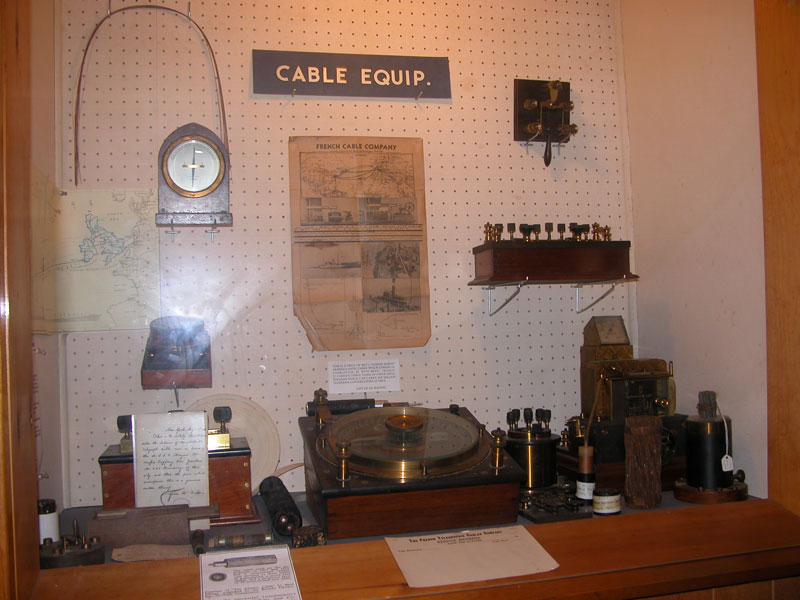 This is cable equipment, and Cyrus Field, of course, is the guy who started the cable business, stretching the first cable across the Atlantic…in 1858. →
This is cable equipment, and Cyrus Field, of course, is the guy who started the cable business, stretching the first cable across the Atlantic…in 1858. → 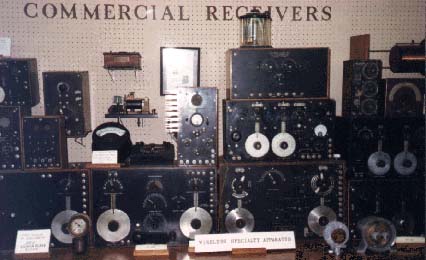 In the North Room, here, are broadcast receivers of the period 1920 to 1925, starting with the Atwater-Kent down at the far end, and running down to Zenith on this end, alphabetically arranged. →
In the North Room, here, are broadcast receivers of the period 1920 to 1925, starting with the Atwater-Kent down at the far end, and running down to Zenith on this end, alphabetically arranged. → 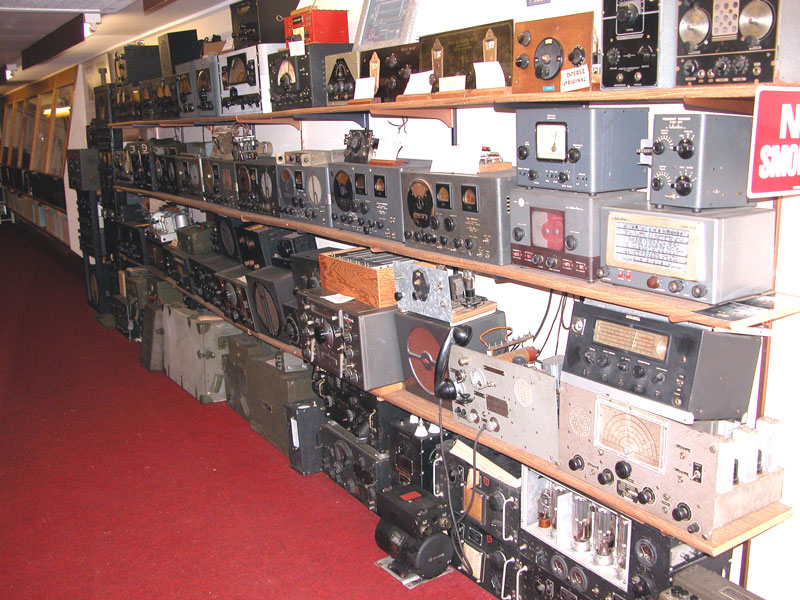 What we have beyond here are communications receivers of various kinds made by various manufacturers. →
What we have beyond here are communications receivers of various kinds made by various manufacturers. → 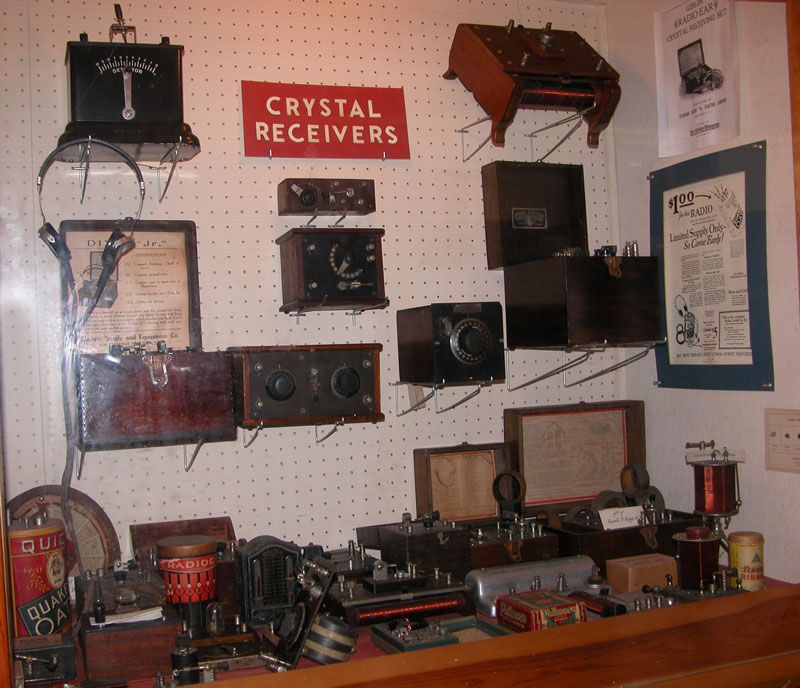 Moving ahead to the early 1920’s when the broadcast radio boom began, here are some examples of early crystal sets. →
Moving ahead to the early 1920’s when the broadcast radio boom began, here are some examples of early crystal sets. → 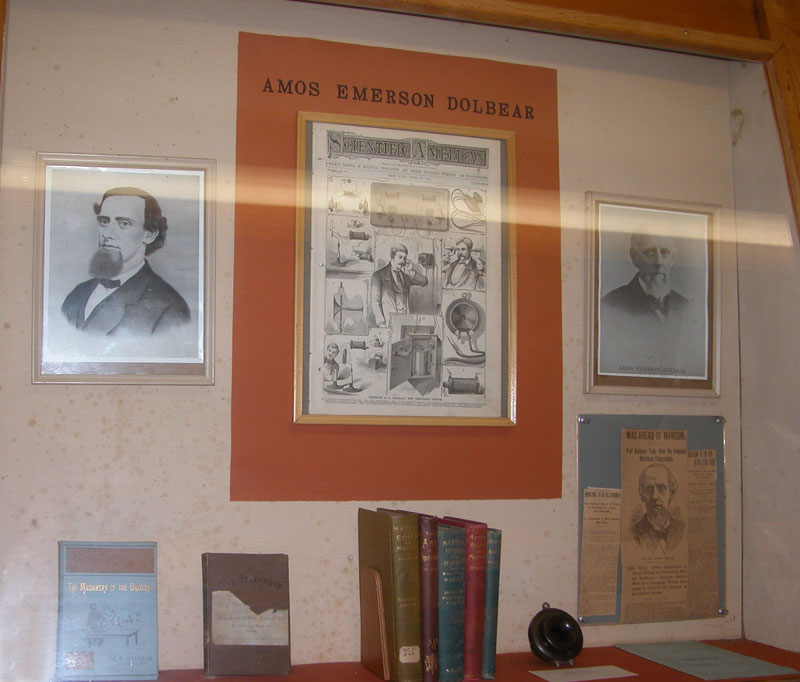 Dolbear had an elevated antenna, and essentially what he was doing was exciting the area around his antenna electrostatically, and the electrostatic field went out. →
Dolbear had an elevated antenna, and essentially what he was doing was exciting the area around his antenna electrostatically, and the electrostatic field went out. → 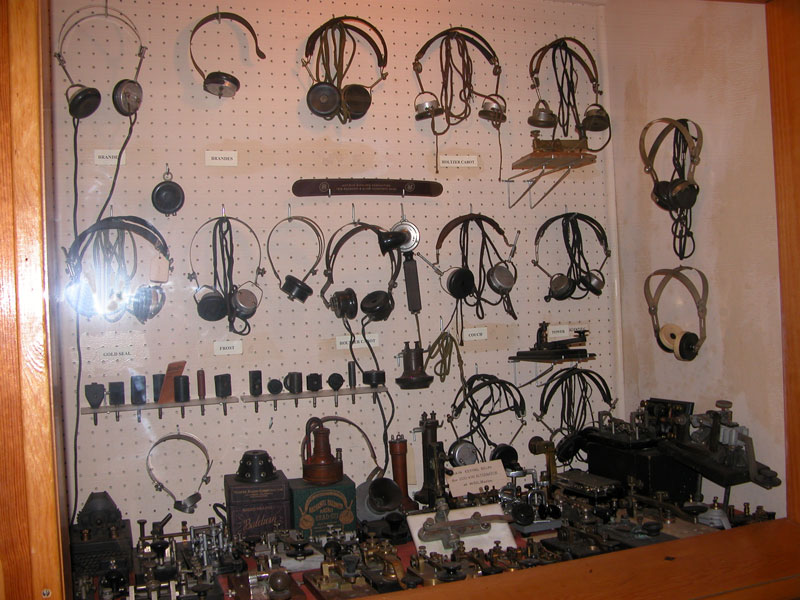 Jumping from crystal sets, one has to realize there were no such things as loudspeakers. So, when you listened you used earphones, of which there were many varieties. →
Jumping from crystal sets, one has to realize there were no such things as loudspeakers. So, when you listened you used earphones, of which there were many varieties. → 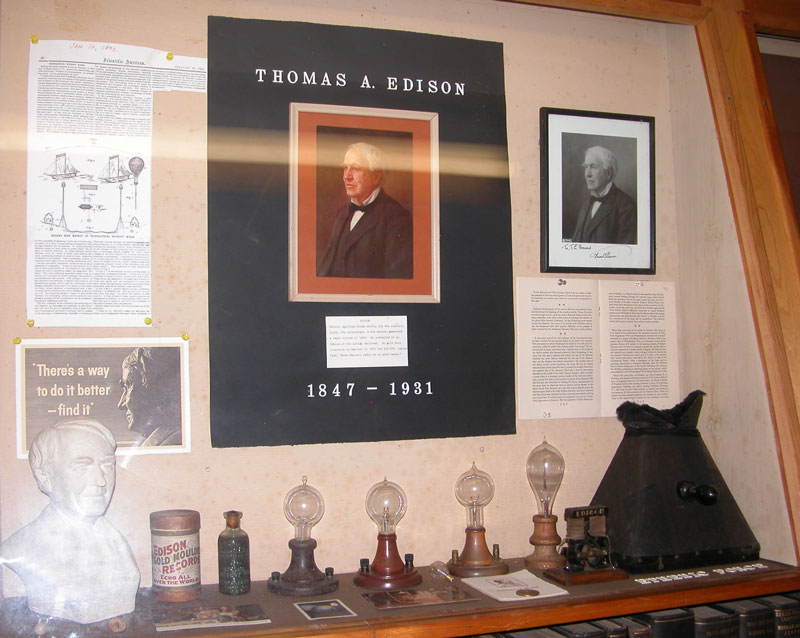 Now we come to Edison, who was the most remarkable guy, with over a thousand patents. I don’t know if anybody else has that many… →
Now we come to Edison, who was the most remarkable guy, with over a thousand patents. I don’t know if anybody else has that many… → 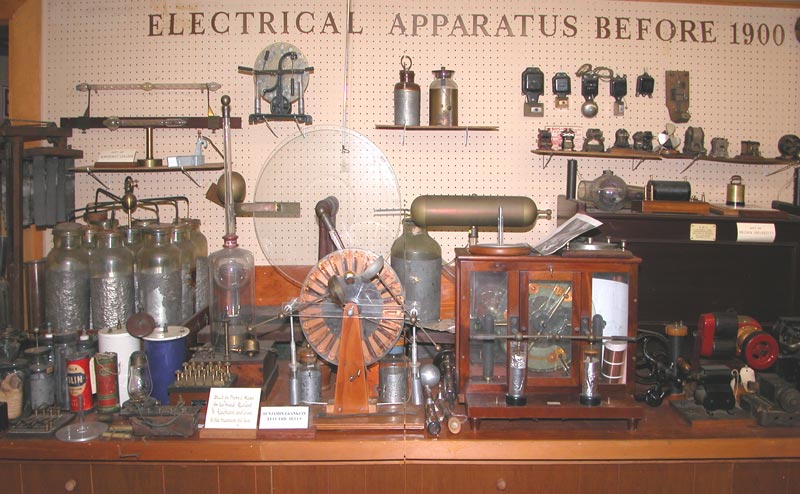 Looking at the South side of the North Room, the length of the counter is arranged chronologically, starting with the earliest devices, the Benjamin Franklin period, and so forth. →
Looking at the South side of the North Room, the length of the counter is arranged chronologically, starting with the earliest devices, the Benjamin Franklin period, and so forth. → 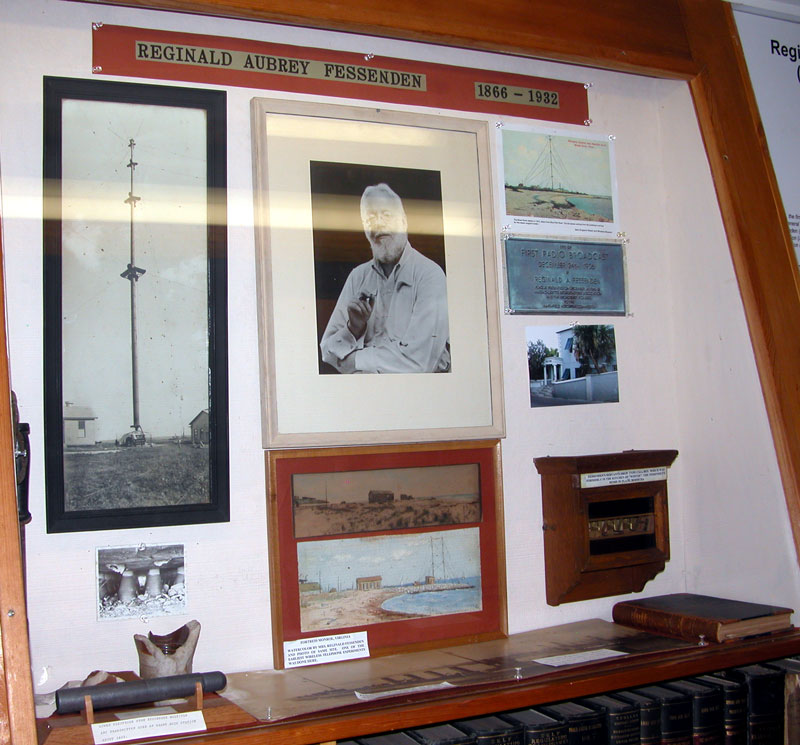 Reginald Fessenden, very, very early, was experimenting with electrostatic effects… wireless, if you will. And he was doing it really before Marconi started doing it. →
Reginald Fessenden, very, very early, was experimenting with electrostatic effects… wireless, if you will. And he was doing it really before Marconi started doing it. → 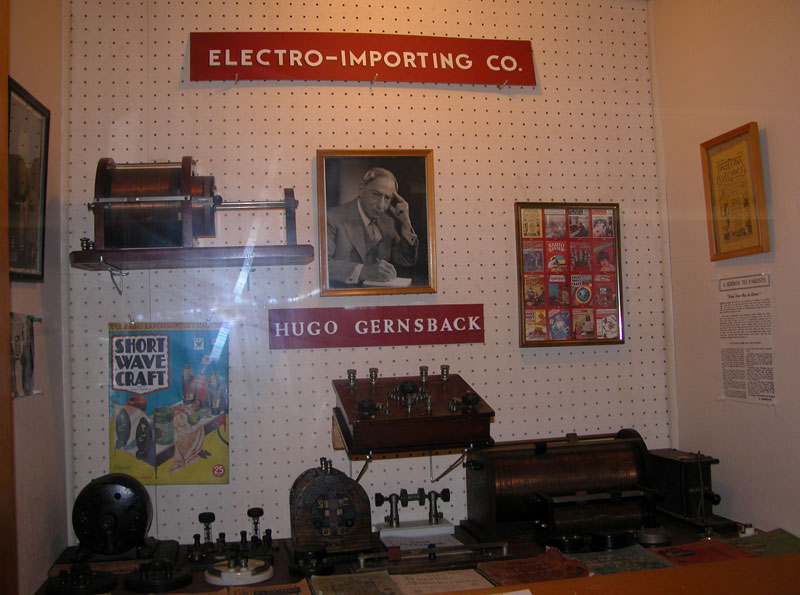 Hugo Gernsback, to me, was a giant, and to many other radio bugs he was a giant, also. He was a most imaginative individual. →
Hugo Gernsback, to me, was a giant, and to many other radio bugs he was a giant, also. He was a most imaginative individual. → 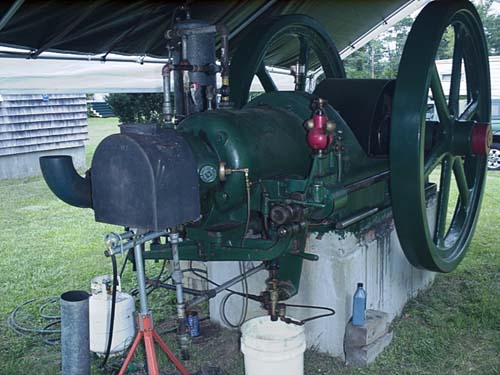 The history of the 25 HP Hornsby-Ackroyd oil engine in the museum's collections starts with its manufacture at the De La Vergne Refrigerating Machine Company's plant in the Bronx, New York, sometime after 1895. →
The history of the 25 HP Hornsby-Ackroyd oil engine in the museum's collections starts with its manufacture at the De La Vergne Refrigerating Machine Company's plant in the Bronx, New York, sometime after 1895. →  Straight spark gaps…there’s a variety of them in here…there are also induction coils…and this is a Crooke’s tube. And here is the first example of a cathode-ray tube, a Braun tube. →
Straight spark gaps…there’s a variety of them in here…there are also induction coils…and this is a Crooke’s tube. And here is the first example of a cathode-ray tube, a Braun tube. →  Jumping ahead to wireless, the early receivers were frequently referred to as loose couplers. →
Jumping ahead to wireless, the early receivers were frequently referred to as loose couplers. →  Moving, now, over to this stiff aristocrat, Bill Marconi. What Marconi was, was a powerful organizer and a business man, and a pretty grabby guy, if you come right down to it, and he succeeded in building giant wireless stations all over the world… tremendous stations… →
Moving, now, over to this stiff aristocrat, Bill Marconi. What Marconi was, was a powerful organizer and a business man, and a pretty grabby guy, if you come right down to it, and he succeeded in building giant wireless stations all over the world… tremendous stations… → 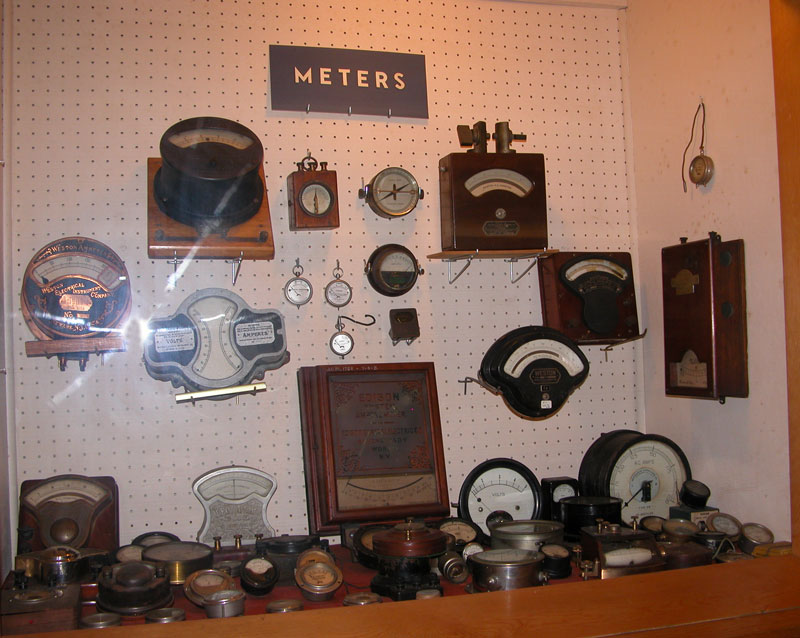 This is a window of various kinds of electrical measuring instruments. →
This is a window of various kinds of electrical measuring instruments. → 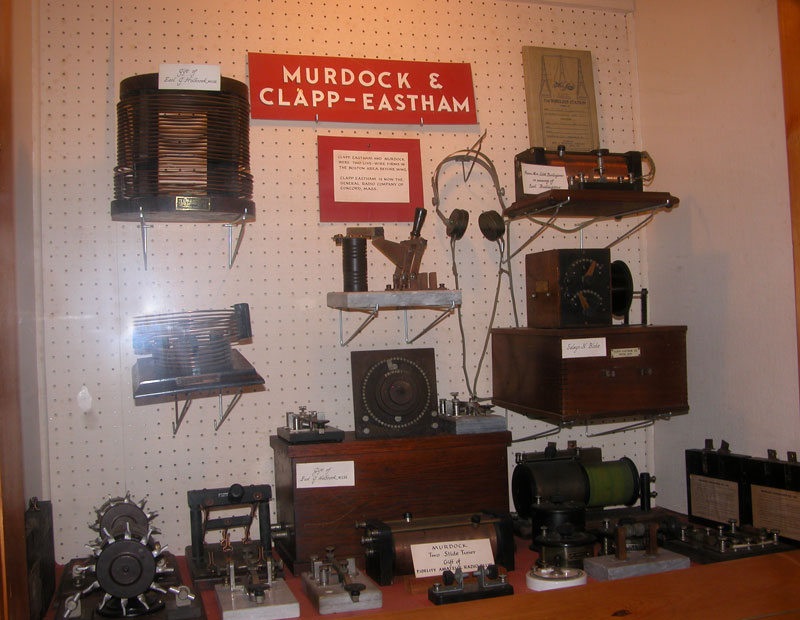 Clapp-Eastham and Murdock were two noted Boston area manufacturers before World War I. →
Clapp-Eastham and Murdock were two noted Boston area manufacturers before World War I. → 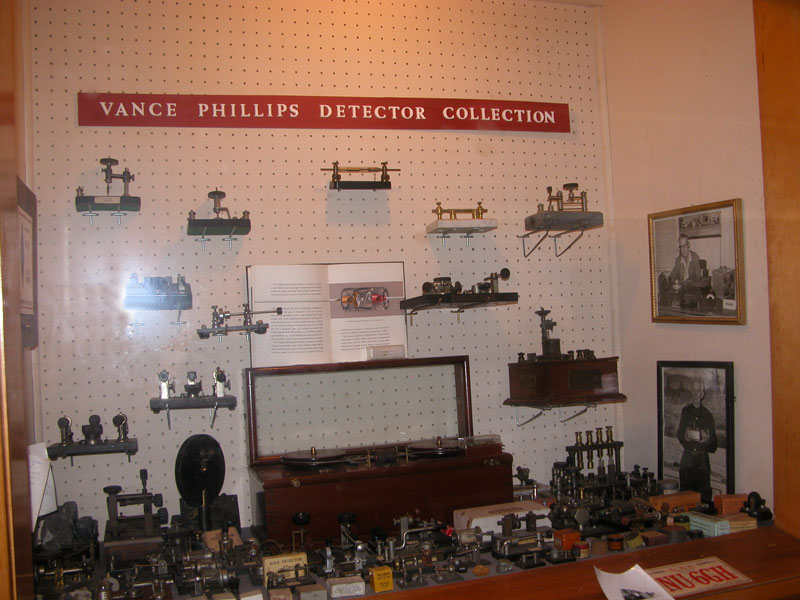 This is a collection of detectors made by Vance Phillips, who is the gentleman in the picture on the right. He was a W6GH. →
This is a collection of detectors made by Vance Phillips, who is the gentleman in the picture on the right. He was a W6GH. → 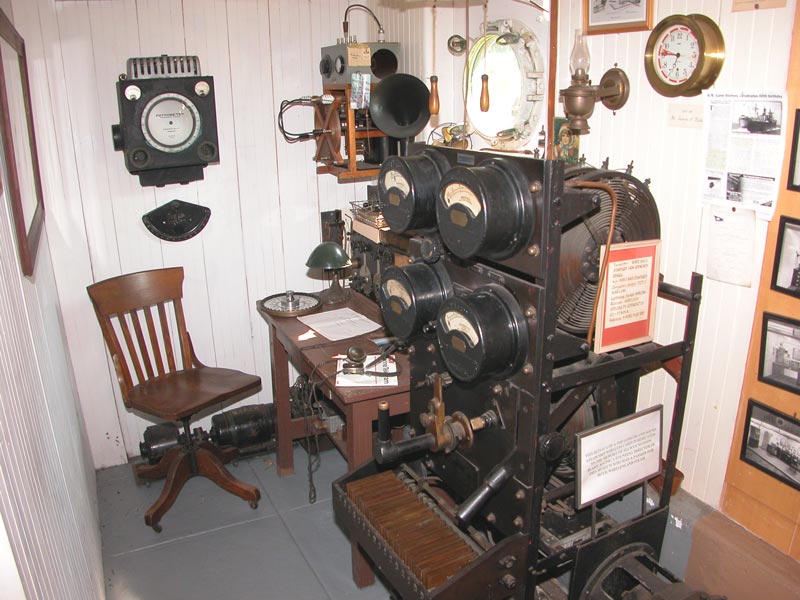 This is a replica of a 1920’s ship radio room, or wireless cabin. The transmitter is a World War I Navy Standard, 1 Kilowatt Kilbourne & Clark Quenched-Gap spark transmitter. →
This is a replica of a 1920’s ship radio room, or wireless cabin. The transmitter is a World War I Navy Standard, 1 Kilowatt Kilbourne & Clark Quenched-Gap spark transmitter. → 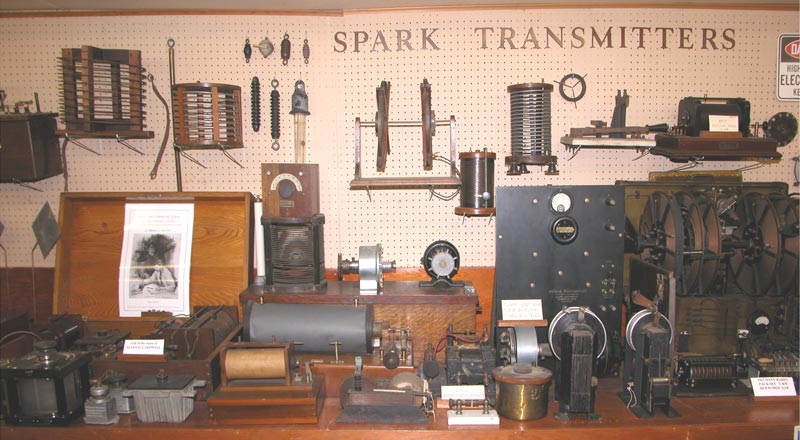 Here is a wireless receiver…these are the antennas…this is the coherer right here, and the bell is the tapper. The transmitter is over there…a spark coil connects to it. This is a very early Marconi Jigger…Marconi used the term “Jigger” to describe an induction coil. It has taps for different amounts of induction. And it’s … Continue reading "Spark Transmitters" →
Here is a wireless receiver…these are the antennas…this is the coherer right here, and the bell is the tapper. The transmitter is over there…a spark coil connects to it. This is a very early Marconi Jigger…Marconi used the term “Jigger” to describe an induction coil. It has taps for different amounts of induction. And it’s … Continue reading "Spark Transmitters" → 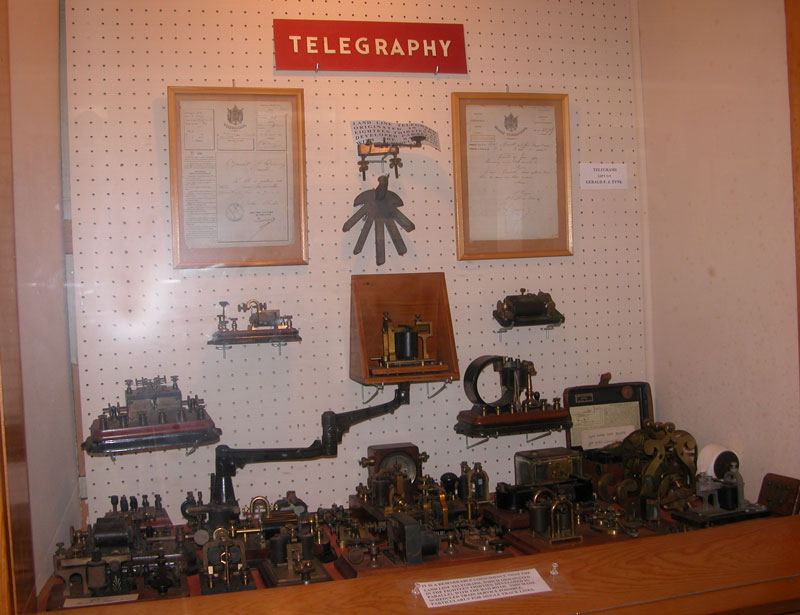 Going down the central hall in the wireless building, there are twelve display cases dealing with electrical communication. The first, naturally, is the telegraph, and in it are examples of telegraph instruments going as far back as Samuel Morse’s first days. →
Going down the central hall in the wireless building, there are twelve display cases dealing with electrical communication. The first, naturally, is the telegraph, and in it are examples of telegraph instruments going as far back as Samuel Morse’s first days. → 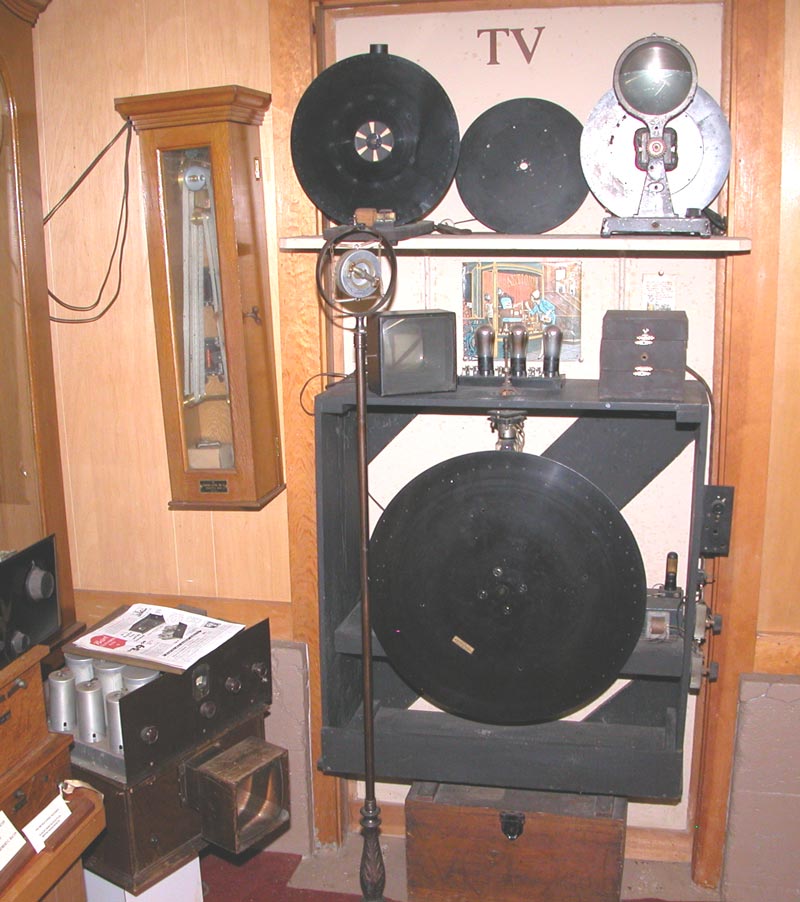 Now we come to television. This is a scanning-wheel television, where there’s a pinhole here. The size of the picture is about an inch-and-a-quarter by an inch-and-a-quarter. →
Now we come to television. This is a scanning-wheel television, where there’s a pinhole here. The size of the picture is about an inch-and-a-quarter by an inch-and-a-quarter. → 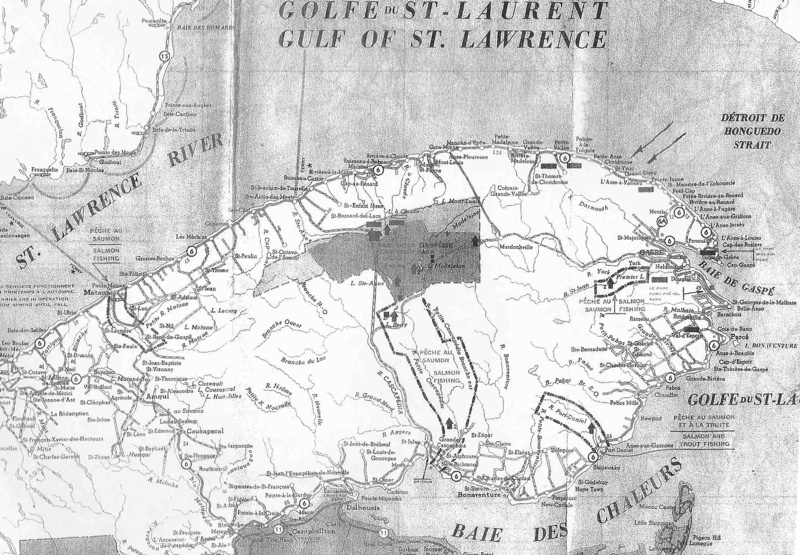 How the only Nazi bomb to hit North America in WW II nearly got me. →
How the only Nazi bomb to hit North America in WW II nearly got me. → 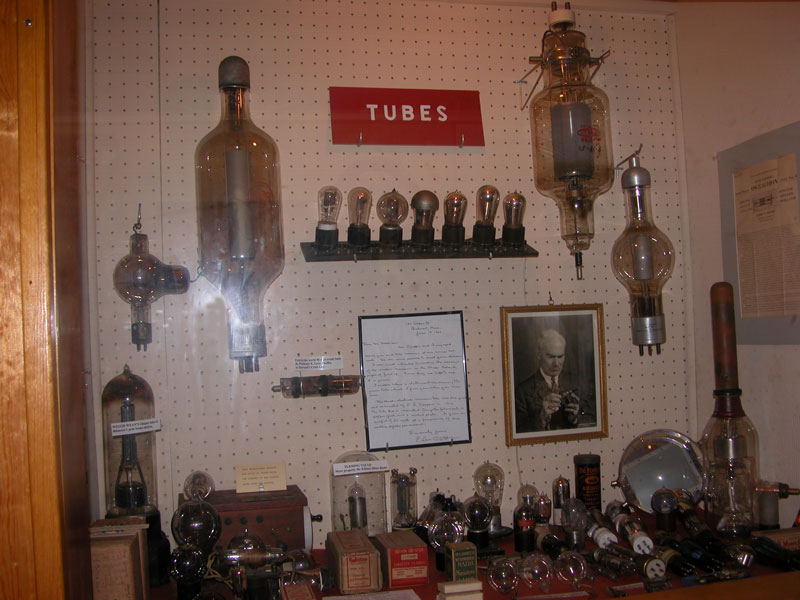 Going here, this is the beginning of the vacuum tube era. Now, there are some very significant things in this particular window. →
Going here, this is the beginning of the vacuum tube era. Now, there are some very significant things in this particular window. →